Races of Entia
BlackMUD curently has 8 distinct races that players can choose. Each is fully fleshed out with unique attributes to set them apart from other races and importantly are directly tied to the content and social, political, and cultural aspects of the game lore. BlackMUD also has 6 races that are being enhanced for playability, including several that are substantively unique to the BlackMUD game. These races are being phased into the game in conjunction with new content that makes them as emersive as the currently playable races. In addtion, the world of Entia is also populated by scores of other races that are not currently slated to be playable (at least not yet), but add substantial depth to the world.

Humans are the most prevalent race on Entia. They originated on the continent of Suma but most were forced to flee to Balric several hundred years ago, due to massive war, famine and plague. Humans vary roughly between 5 and 7 feet in height. They are of varying skin, hair, and eye color. In Suma, they often lived in communities with similar coloring, whereas in Balric, they mix. They are of widely varying strength and intelligence. Humans can adapt to almost any occupation or environment and often excel at their chosen professions. Individually, humans can be of any alignment or entrophatic nature. The relationship between humans and elves has shaped the last millennium of history on Balric. Humans went from refugees to enslaved people to revolutionaries to rulers. However, humans seldom live beyond seventy years and can produce as many as two dozen offspring in a lifetime. Because of this, the number of humans grew rapidly. Humans now rule much of Balric in the form of several large nations. Human society has a strong tendency towards chaos, and the world of humans is always in flux.

Dwarf
Dwarves are a short, stout people. Both male and female dwarves typically average between four and five feet in height. They have thick,
coarse hair, most often of brown or red coloring - dwarven culture prizes long, thick beards, which are often braided and decorated with
beads and gems. Despite the plethora of racial jokes, dwarven women do not have facial hair, though many do wear heavy be-gemmed veils
over the lower half of their faces. Dwarves are an extremely hearty race, with enormous strength about their size and highly acute night
vision. They naturally resist infection and disease and are resistant to many poisons. Strangely, there is a disproportionately high
infant mortality rate among dwarves. Dwarven stature undoubtedly evolved from the millennia the race has spent in the mountains and
caverns of the Tek Ar Mountains. They spend much of their time mining precious metals and stones and tending underground plant farms
and water wells. Their vast stores of metal ore and gems supply a lucrative trade with the other races. Other than a relative handful
of dwarves living in the various human cities and a couple of small colonies, most dwarves live in the vast underground city of Mreec.
Dwarves despise gralner and the 'strunkt' (sub-human) races and have been known to attack them on sight.
Since the Second War of Dominance, dwarves have trained extensively in defensive combat techniques against giant-sized opponents. Dwarves
have little natural aptitude for manipulating chaos, and they dislike magic in general. However, they do make exceptional clerics.
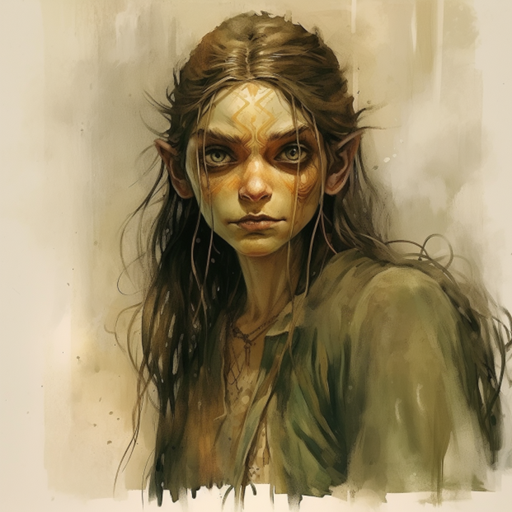
Elf
Elves are the oldest of the sentient races on Entia. Many believe they were the first to branch off from the common evolutionary path
from which most races originated. They are similar in height to humans, roughly 5 to 7 feet. Also, like humans, they have varying skin,
hair, and eye color. Their facial features are slightly narrower than the average human, their ears tend to be longer and thinner, and
their eyes are somewhat larger in proportion to their faces. Elves grow very little in the way of facial hair. Elves are usually slight
or athletic in build, with a fat elf being a rare sight. They are swift and agile and have incredibly acute vision. They have a strong
natural ability to manipulate chaos and are generally very intelligent.
Elves were the dominant species on Entia, the continent of Balric specifically, for millennia. Elves can live to be four hundred years
old but can only produce a handful of offspring during that time. This longevity and social inflexibility turned out to be their undoing.
The relationship between humans and elves has shaped much of the recent history of Balric. Elves, once masters of enormous and wondrous
cities, were reduced to being the slaves of those they persecuted. They eventually threw off their shackles and became nomadic warriors,
struggling for survival and redemption. During the last one hundred years, elves have become adept at surviving in the wilds of Balric
and conducting devastating hit-and-run attacks on the smaller settlements of humans. In recent years, the efforts of a handful of
enlightened and generous individuals have established a shaky peace between humans and elves. There remains a great deal of animosity
between elves and humans and between elves and dwarves to a lesser extent. Like many races, Elves have no tolerance for the 'sub-human'
races, like orcs and ogres. Elves are equally at home in large cities and the most rugged wilderness.
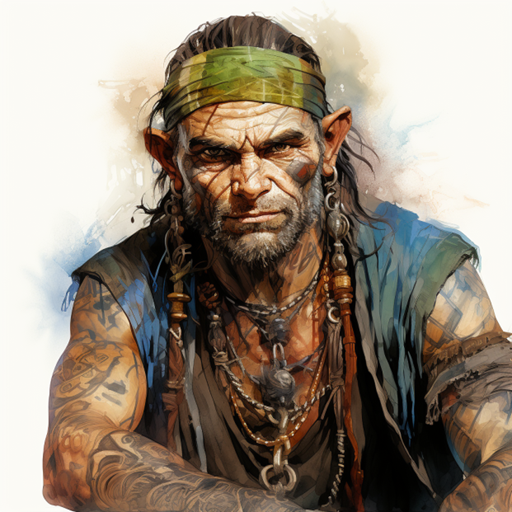
Halfling
Halflings are the smallest of the humanoid races, averaging three to four feet in height. They are slight in build and can be easily mistaken for human children. Halflings don't have facial hair and usually wear their hair long. Their skin is golden brown, and they often have colorful tattoos on their arms and torso. Halflings are incredibly nimble and quick. They also have a robust immune system that makes them immune to most poisons and allows them to heal quickly. Halflings have a natural aptitude for magic, and their size and dexterity make them exceptional thieves. Halflings only have up to two offspring in a lifetime. Thus, there are very few. Other than a small number that live in the cities of different races, most halflings live in the forest area known as N'wic.
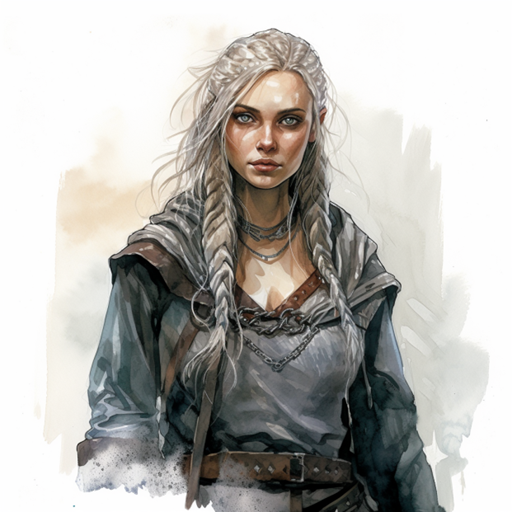
Half-elf
Half-elves are the result of a union between an elf and a human. Half-elves can easily pass for human or elves, depending mainly on their choice of hairstyle and whether they have facial hair or not. They retain the sturdiness of their human side and the nimbleness of their elven side. Like both races, they have an affinity for manipulating chaos and making good clerics. However, only some half-elves inherit the acute vision of the elves. The type of union that produces a half-elf is considered taboo by most members of both races due to the years of war and hatred between the two species. Often a half-elf was the result of rape; however, in more recent years, they have resulted more commonly out of love. Some half-elves are raised openly in elvish communities and are often resentful of the treatment they receive from their peers. Both races shun half-elves and prefer the faceless masses of the human cities to dwell in.
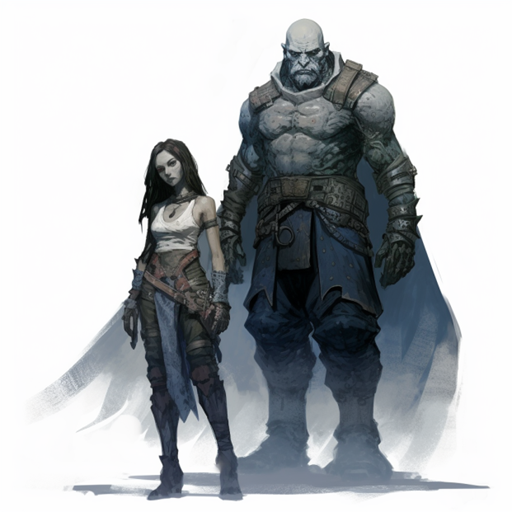
Half-giant
Half-giants are born from the uncommon union of a giant and a human. They are the 'average' of giants and humans. They are larger than humans but smaller than giants and quicker than giants but slower than most humans. They exhibit the full range of human hair, eye, and skin coloring. Their combination of size and speed make them excellent warriors and able to cover great distances in a short time. Half-giants lack the ability to manipulate chaos but make outstanding clerics. Most half-giants live among the giants of Gartome, but a few frequent the human cities, where their size often makes them valuable soldiers and guards.
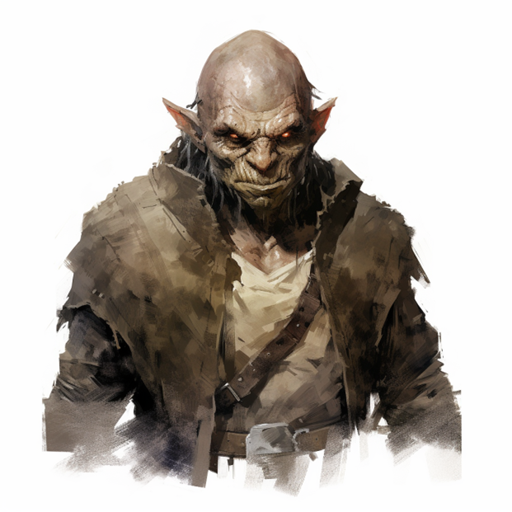
Half-orc
Half-orcs are a milder version of their orcish parent. They are usually born of human mothers and orcish fathers. Half-orc children born
to orcish mothers tend to have concise lives. Half-orcs, for the most part, appear as deformed humans. They often have broad, flat faces,
jagged teeth, slightly grayish skin coloring, and more body hair than an average human. They are more robust than a normal human of the
same size. Like their orcish parent, they cannot manipulate chaos. Also, like orcs, they lack the aptitude to be clerics or monks.
Half-orcs are social outcasts. They often live in the shadier sections of the enormous human cities. Many survive by working as thieves
or hired thugs. They are scorned by merchants and guards and stay in the shadows as much as possible. With enough clothing, some
half-orcs can pass as humans.
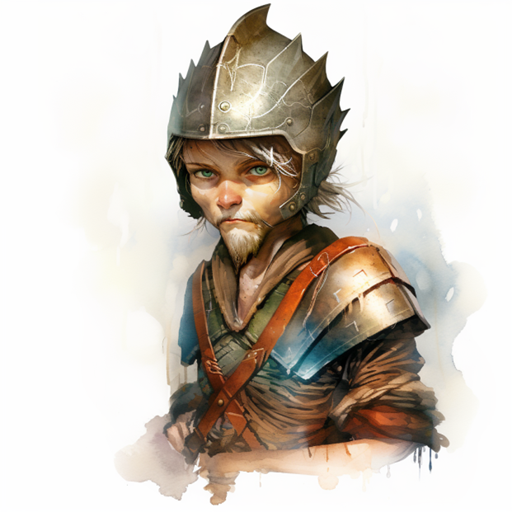
Mirlad
Mirlad are the result of inter-breeding between elves and dwarves. They tend to be of dwarven height and elven build and have the thick course hair of dwarves. They have both the tensile strength of dwarven musculature and the agility of the elven frame. Roughly half of Mirlad inherited the acute vision of their elven parent. Mirlad tend to be less adept at magic than elves. Dwarves and elves were mildly hostile towards one another for hundreds of years before the arrival of humans on Balric, and both societies frowned upon interbreeding. Thus, mirlads are considered social outcasts. Most Mirlad are sterile from birth and, therefore, not capable of reproducing. Because of their social status, most Mirlad live near humans to avoid the scorn of their parents' races. The melding of dwarven and elven features tones down the distinguishing characteristics. They are often mistaken for humans.

Giant
Giants are the largest of the sentient races on Entia. They average between eight and nine feet in height. Though some can be extremely
large in girth, they tend to be slim. Even a giant of slim build is mighty due to their overall size. Giants tend to be colorful people,
with their hair and skin having various hues. Giants tend to only breed with giants of the same hue. Therefore, the coloration of a
given giant is distinctive of its family or tribe. The Haendaki tribe, for example, tends to have ruddy skin, fiery red hair, and an
equally fiery temperament. Humans and dwarves have referred to them by representations of their coloration. People commonly refer to the
Haendaki as fire giants. Giants also tend to garb themselves in clothing of similar coloration.
Giants live almost exclusively in the Gartome Mountains in the northwest corner of Balric. Mostly, they are content to stay within this
region and live a simple and relatively peaceful existence. For some unknown reason, during the Second War of Dominance, the great tribes
flowed out of Gartome and inflicted terrible casualties on the armies of man and dwarf. That is the only time in known history that giants
have left their native land en masse.
Giants shun the cities of other races, perhaps feeling awkward or confined by the small enclosures or unwelcome by the smaller races.
Dwarves don’t care for giants and allow very few to enter the halls of Mreec. They excel at rock carving and metal work, like their
diminutive distant cousins, the dwarves. Giant metal and rockwork are very distinctive from the dwarves, however. For the most part,
giants are a surprisingly jovial and intelligent species. They lack the innate ability to manipulate chaos, and their size precludes
them from more stealthy occupations. They are ferocious warriors when forced to fight, and there are several strong giant clerics.
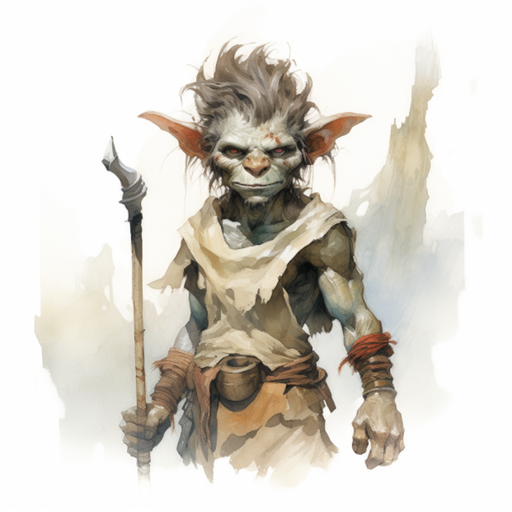
Gorboc
Gorbocs are slightly smaller and slimmer than standard Orcs but exhibit a higher level of intelligence. They possess the same thick, coarse hair on their necks and spines. Their skin is also thick and rough but more brownish. They have small, sharp teeth, acute night vision, and a keen sense of smell. Also, like Orcs, they have highly developed immune systems and heal very quickly. Unlike other Orcs, Gorblocs manipulate chaos and are known to have both mages and clerics, although how they learn their arcane skills is unknown. World Context: They appear less xenophobic than other bestial races, preferring to hide rather than attack if possible. Gorbocs have become increasingly active in the world like other bestial races for some unknown reason. Recently, there have been reports of the unusual presence of Gorbocs among other Orcs.
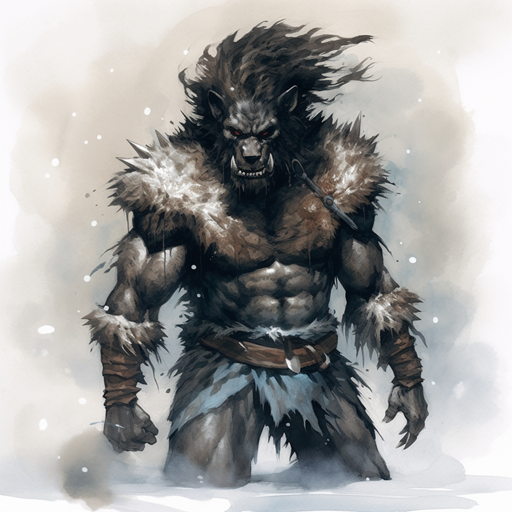
Gralner
Gralner appear to be the cross between a humanoid and an animal. Their appearance is an odd combination of feline and lupine characteristics.
Males tend more toward the lupine, while females tend more toward feline. Most have thick fatty humps located on their backs, which are capable
of storing a great deal of internal moisture. Thus, gralners are ideally suited for living in the harsh and arid regions of the Black Sands
Desert. They average close to 7 feet in height, with no noticeable difference between males and females. However, males tend to outweigh females
by more than 50%. All gralner are very strong and incredibly fast and agile for their size. However, they are generally not very intelligent and
lack the natural ability to manipulate chaos. Oddly, there are always a few gralner clerics of immense power. Gralner only reproduces once a
lifetime, giving birth to a litter of 5 - 10. Thus, they are fewer in number than most races. Also, due to this limited reproductive cycle, females
are violently protective of their young. Gralner is a vicious and violent race with strong xenophobic tendencies. They have been known to eat the
flesh of their fallen victims and often use the bones to make weapons, armor, and ornamentations. Observers have also noted that under harsh
conditions, Gralner commits cannibalism and brutally slays sick and elderly members of their tribes. Gralner tribes tend to be small and primarily
nomadic. They are hunter-gatherers that often follow the migrations of sand-shark herds.
Usually, grainer clerics, who worship a nameless god, lead the tribes. However, due to the low number of these clerics, some tribes are led by the
most prominent male hunter. These tribes live in harmony for the most part. However, witnesses have observed significant battles between greater
tribes. Historically, the gralner have maintained their simple lives in the vastness of the Black Sands Desert. During the First War of Dominance,
an unknown force could rally an immense army of gralner from scores of tribes and lay siege to the Kingdom of Bayse and even to the capital city of
Tansar itself. Much of what is known of the gralner has been acquired by various explorers and mages, almost always from a great distance.
Travelers should be wary of the Black Dunes altogether but, most of all, the grainer.
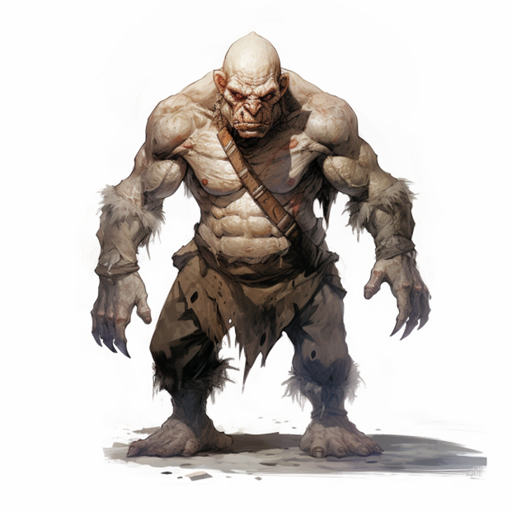
Ogre
Ogres are the progeny of an orcish father and a giant mother. All known ogre births are the result of rape. The peaceful race of giants believes life to be precious and will not directly take a child's life, even one as freakish as an ogre. Ogre children are 'given into the hands of the gods' and left upon an altar on a distant mountain. The few ogres that survive are usually found and raised by orcs. Due to these facts, there are very few ogres in the world. Ogres strongly resemble their orcish fathers but are enormous in comparison. They average nearly eight feet in height. Their limbs are thick, knotted with muscle, and easily as strong as female giants. Ogres have little or no hair, and their eyes are always black. Their sense of smell is unparalleled amongst the sentient races of Entia. They eat enormous amounts of food and heal faster than any other race. They are also swift for their size and can quickly travel great distances. The ogre trait known to all is their brutality and ferocity. They know no fear and will seldom flee a battle. Ogres are attacked on sight or fled from by most other races. They cannot manipulate chaos, and no known ogre clerics exist, though people think that all ogres worship the ogre god, Paghk. Ogres are pretty simple to understand; they live to kill.
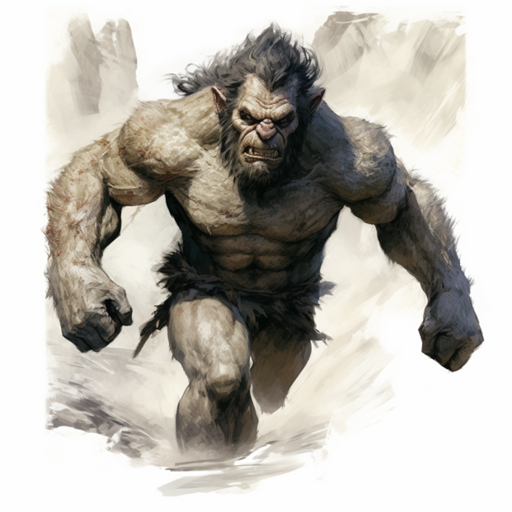
Orc
Orcs are what the dwarves call a 'strunkt' (sub-dwarven) race. Most of the other sentient races of Entia view them as little more than vermin. They propagate fast and live only to breed, eat, and fight. Orcs are of similar size to humans, with broad, flat faces. They have thick, coarse hair, which also grows along the neck and upper half of their spines. Their skin is thick, rough, and greyish. Orcs have dozens of small sharp teeth, acute night vision, and a keen sense of smell. They have highly developed immune systems and heal very quickly. They speak a simple, guttural language; most are of limited intelligence. Orcs lack the ability to manipulate chaos, and there is no record of orcish clerics. Orcs live in tribe-like organizations, usually located in caverns in the various mountain ranges of Balric. Orcs are a severely xenophobic race. They will attack almost any living creature they happen across if they outnumber it or are much larger than it. Individually, orcs are cowardly and will run from nearly anything more significant than them or from groups.
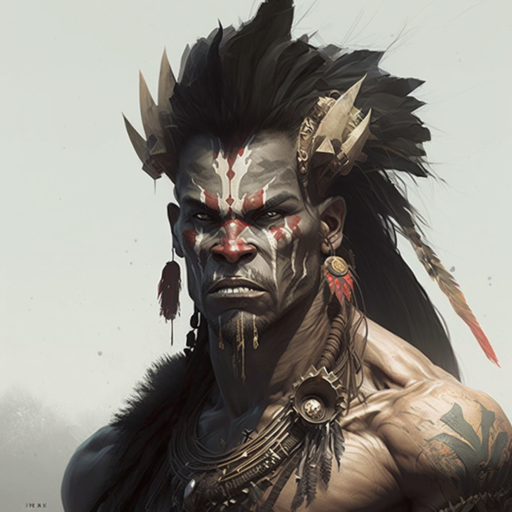
Tarr
The tarr are the newest race to the face of Entia. People believe them to be an odd mix of ogre and human and to have come into existence through magic. They breed faster than their distant cousins, the orcs, but have concise life spans. It is uncommon for a tarr to live beyond thirty years. Tarr are slightly larger than humans on average and are extremely strong for their size. Their skin has a greyish tint, and teeth are usually small and jagged. Tarr lives exclusively in the Red Ridge Mountains of Blaric, south of Gartome and north of Nera Valley. A loosely knit confederation of tribes makes up the Tarr nation. A triumvirate of a warrior chief, a high priest, and a chaotic mage leads each tribe. The most powerful tribe leads the confederation. The various tribes are often at war with each other. Occasionally, the tribes will cooperate enough to launch raids on western Makilor or northern Bayse. Tarrs worship the gods of chaos, and their short lives are spent engendering as much chaos as possible. Tarr is extremely dangerous and unpredictable. Tarrs are not welcome in the domains of other races.

Wep
The weps are from a completely different evolutionary branch than the other sentient races of Entia. They appear to be the cross between a fish and a human, but there is nothing human about them. Their bodies are anthropomorphous in limbs but have a long, thick tail, webbed fingers, and toes tipped with tiny claws. They have two large lid-less eyes and small mouths but hundreds of tiny sharp teeth. Wep skin is covered with small bluish-green scales, and they have six-gill slits along the sides of their necks. Wep lack the natural ability to manipulate entropy but are known to have powerful clerics who worship the gods of chaos. Wep are amphibious, spending much of their lives in the water, but also capable of living on land for short periods. Wep can breath both water and air. They are as fast and agile as sharks in the water but move slowly on land, but are physically powerful in either environment. Wep will eat the flesh of opponents who fall to them in battle, regardless of race. Wep are also known to keep sharks as pets and guards. Wep society is monarchical, with a single family ruling all others. The Kingdom of Naran is currently at war with the Wep for control of the Felan Isle in the Aonos Sea. Little is known as to the motives of the Wep, but they are incredibly territorial. Wep are dangerous when encountered on land and deadly when encountered in water.